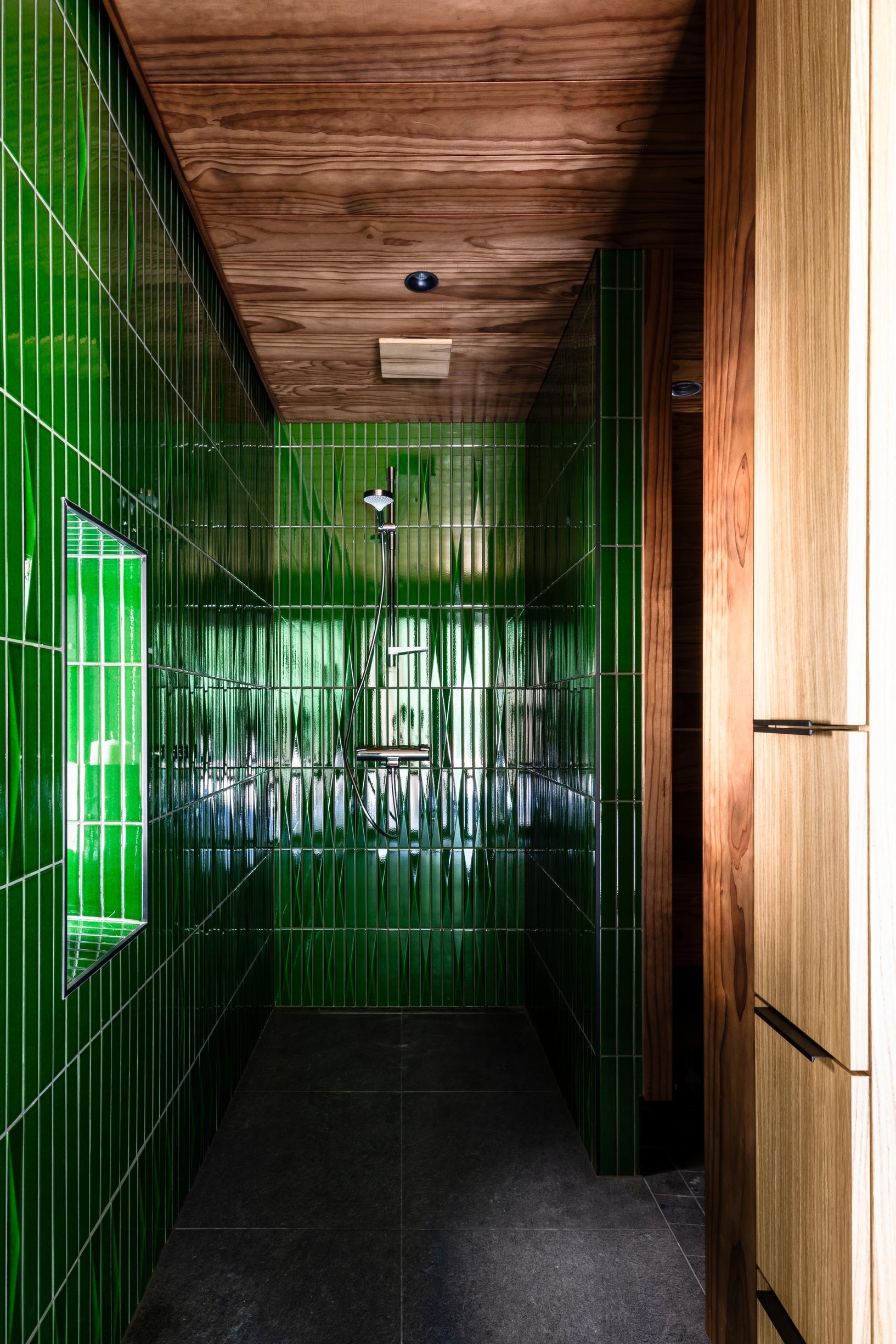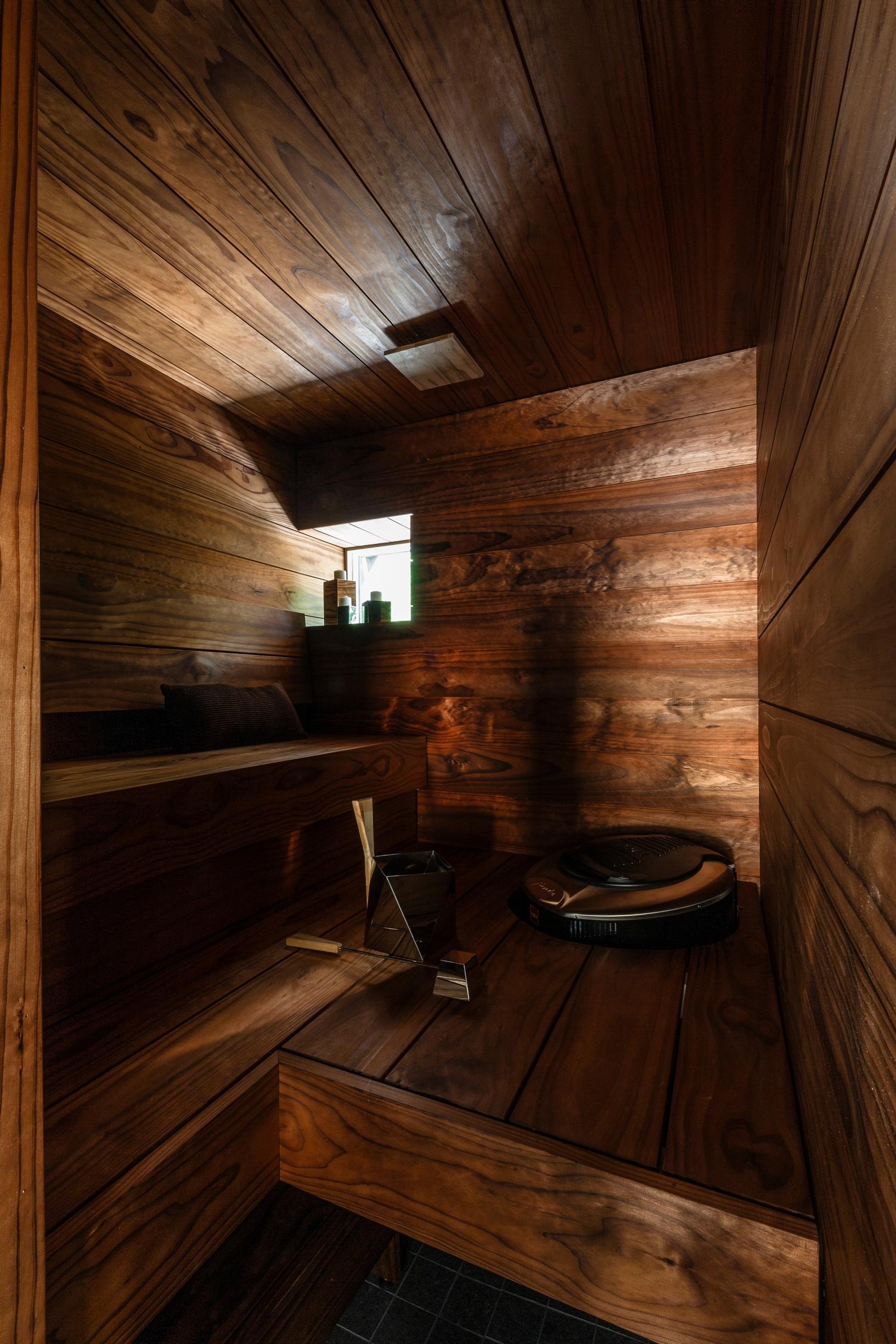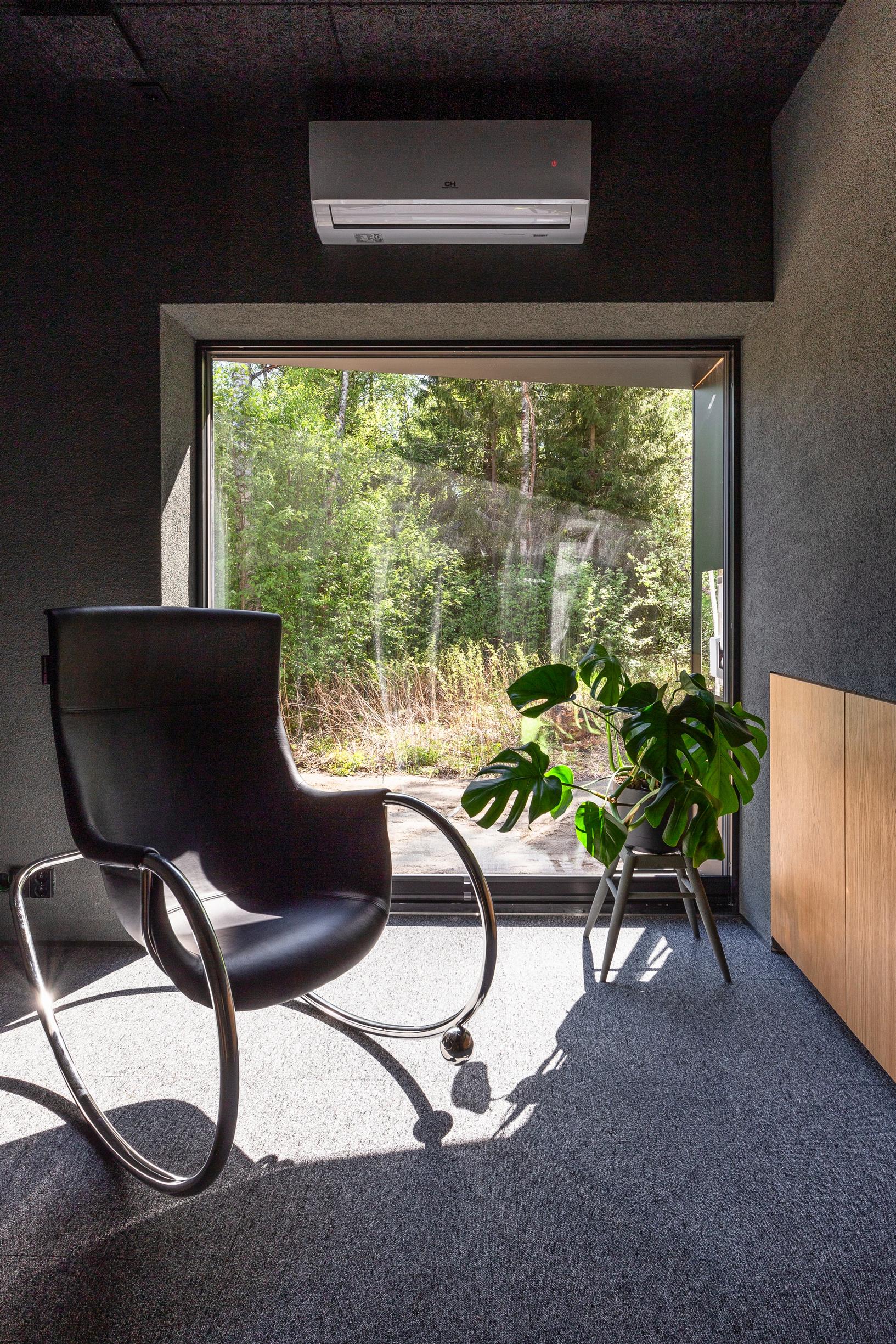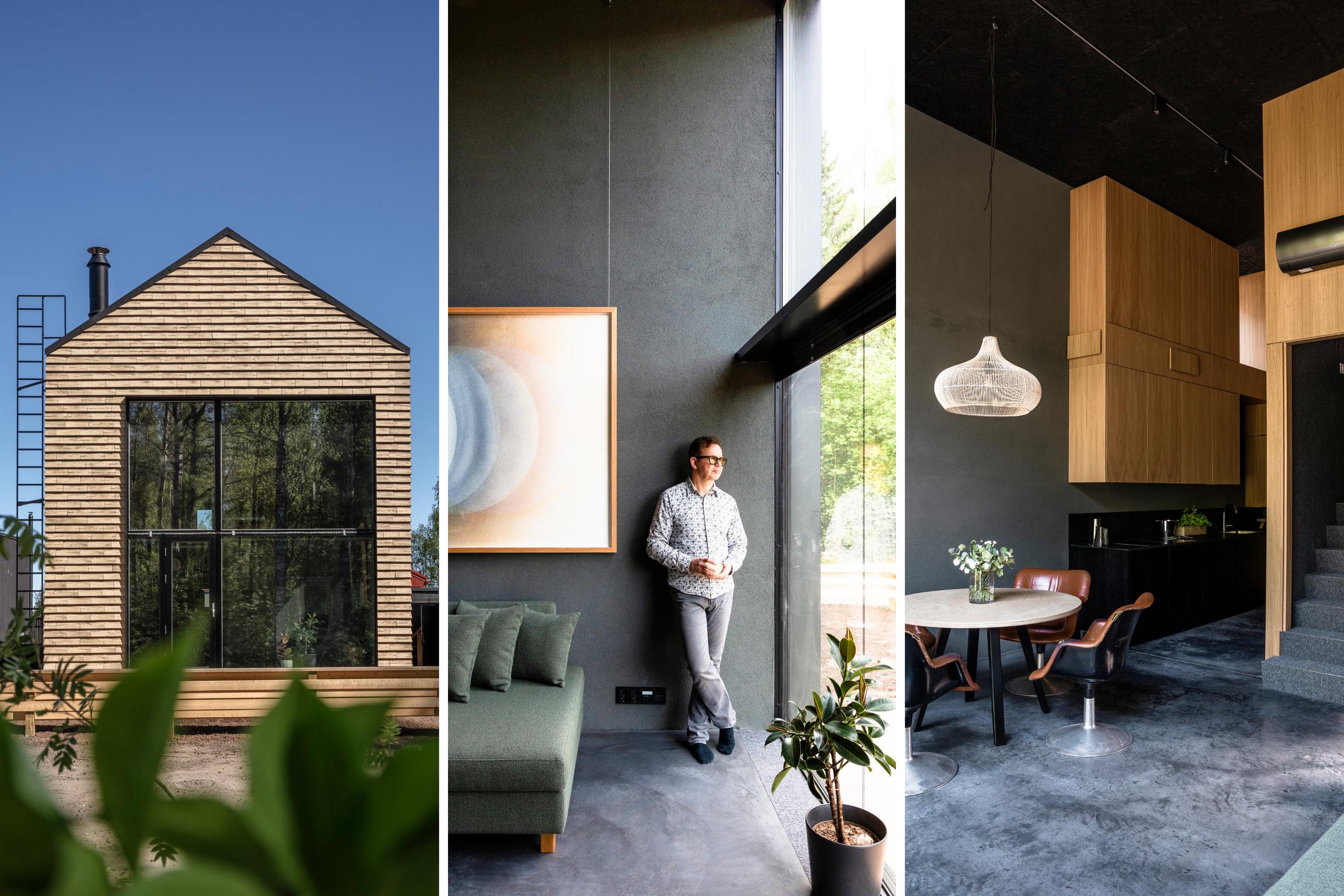
Kimmo’s family of four move into a tiny 53-square-meter home in Oulu’s Housing Fair area: “My life as a hoarder has to come to an end now”
You wouldn’t believe how spacious and bright a dark 53-square-meter tiny home can be. Kimmo’s family of four is downsizing to one-fifth of their current space in the Hjemma house at the Oulu Housing Fair, Finland. Fortunately, the architect found plenty of ingenious ways to maximize every inch.
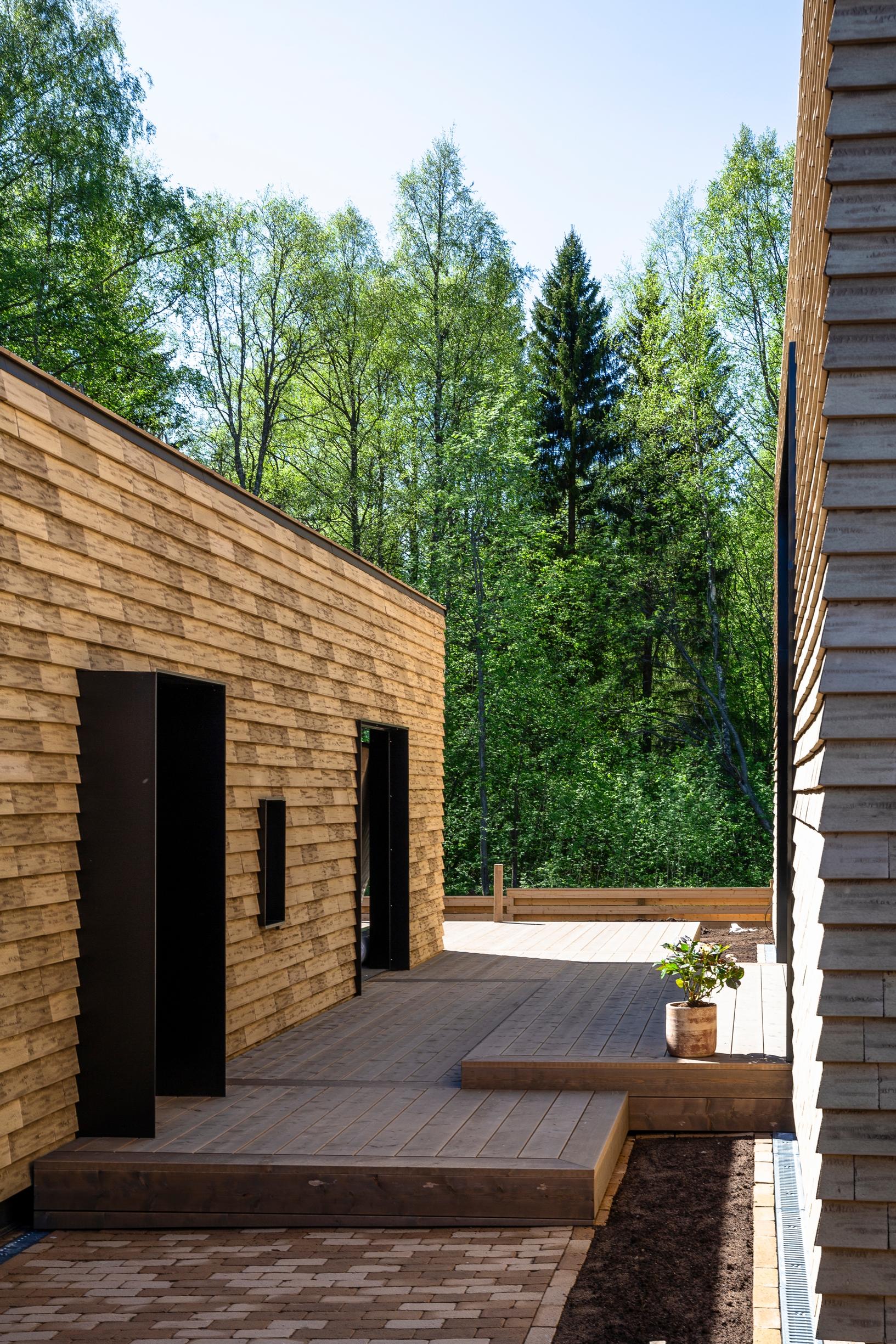
“We have succeeded if, decades from now, you can’t tell when this house was built,” says construction engineer Kimmo Illikainen as he sits at the round table in the Hjemma house. He wanted a timeless home made with as few different materials as possible.
Kimmo became interested in the small-house section of the Oulu Housing Fair in Finland because building codes required a separate outbuilding. He has always dreamed of having a backyard sauna.
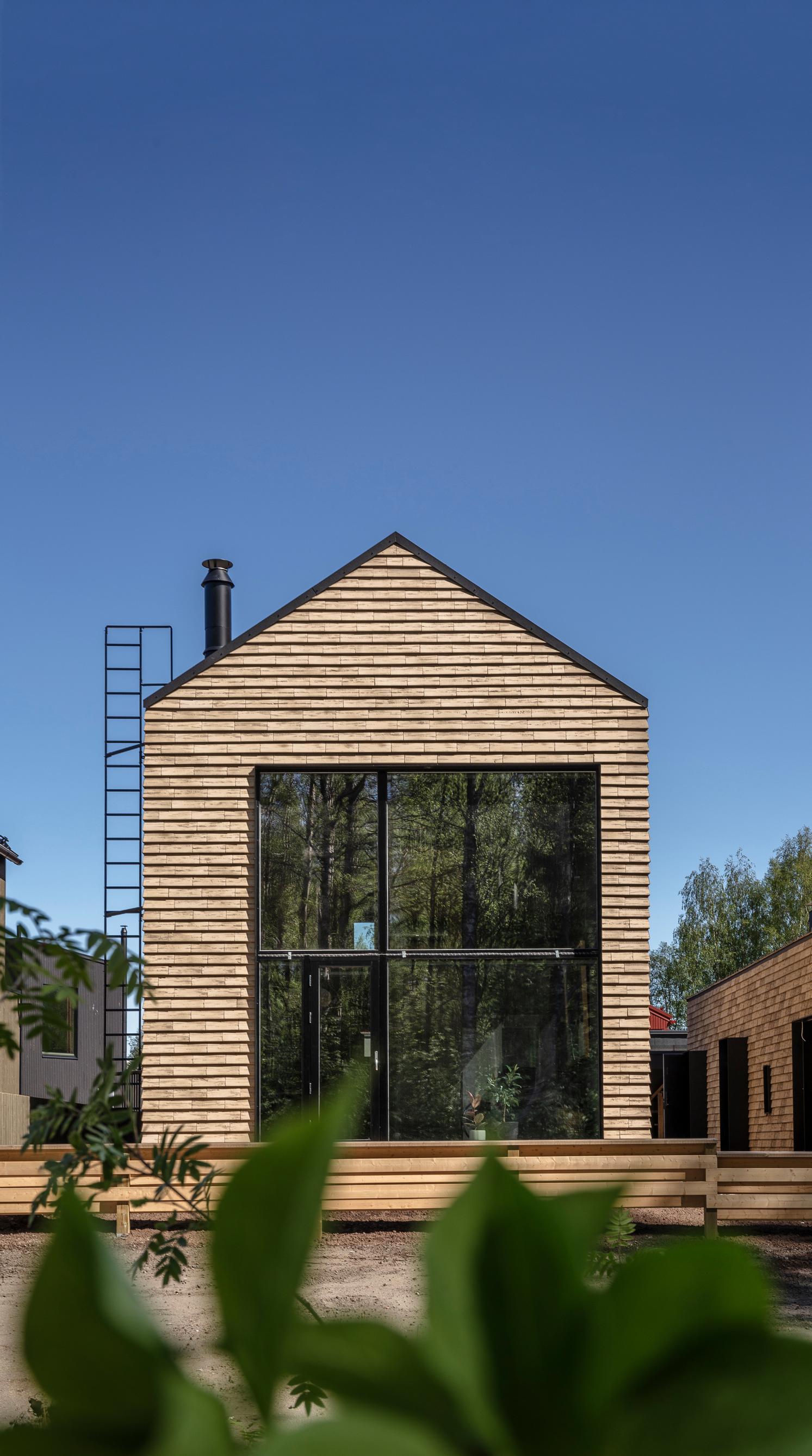
residents Kimmo Illikainen and his family. He is a construction engineer and a teacher at Oulu University of Applied Sciences.
home Architect Pave Mikkonen’s design for the Hjemma house at the Oulu Housing Fair. The main living area measures 53 square meters, with an additional 15 on the loft. There is also a 20-square-meter storage and sauna building.
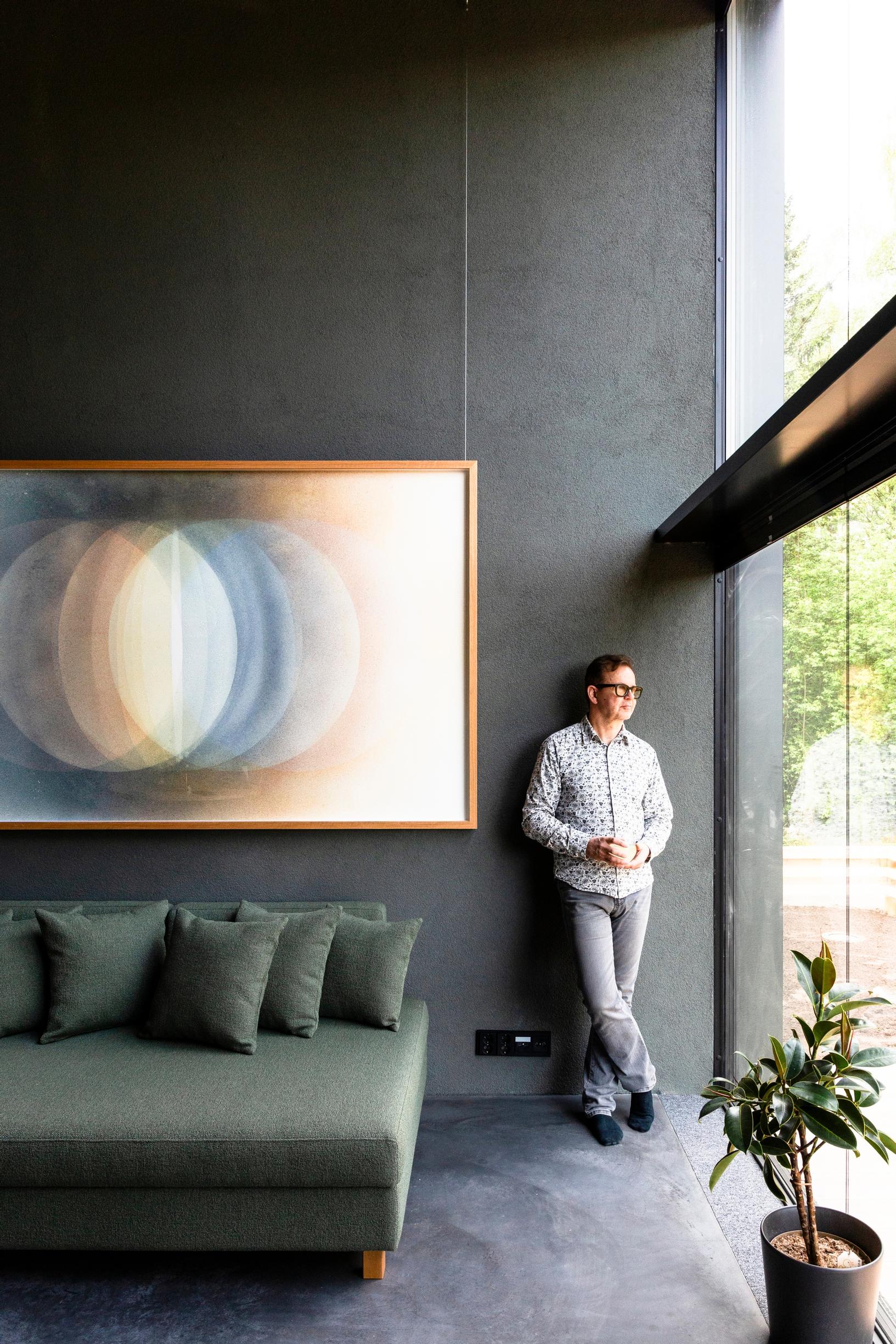
Kimmo asked Oulu-based architect Pave Mikkonen, whom he has known for over 30 years, to design the house. Pave has previously designed three homes for Kimmo. For Pave, timeless architecture rooted in its location is essential.
Hjemma, in turn, refers to a homey, human-scale ambiance with a warm atmosphere.
“I envy the Danish concept of hygge. In this house, you can feel a bit tucked away in a cozy place, created by warm, authentic materials and good acoustics,” says Pave Mikkonen.
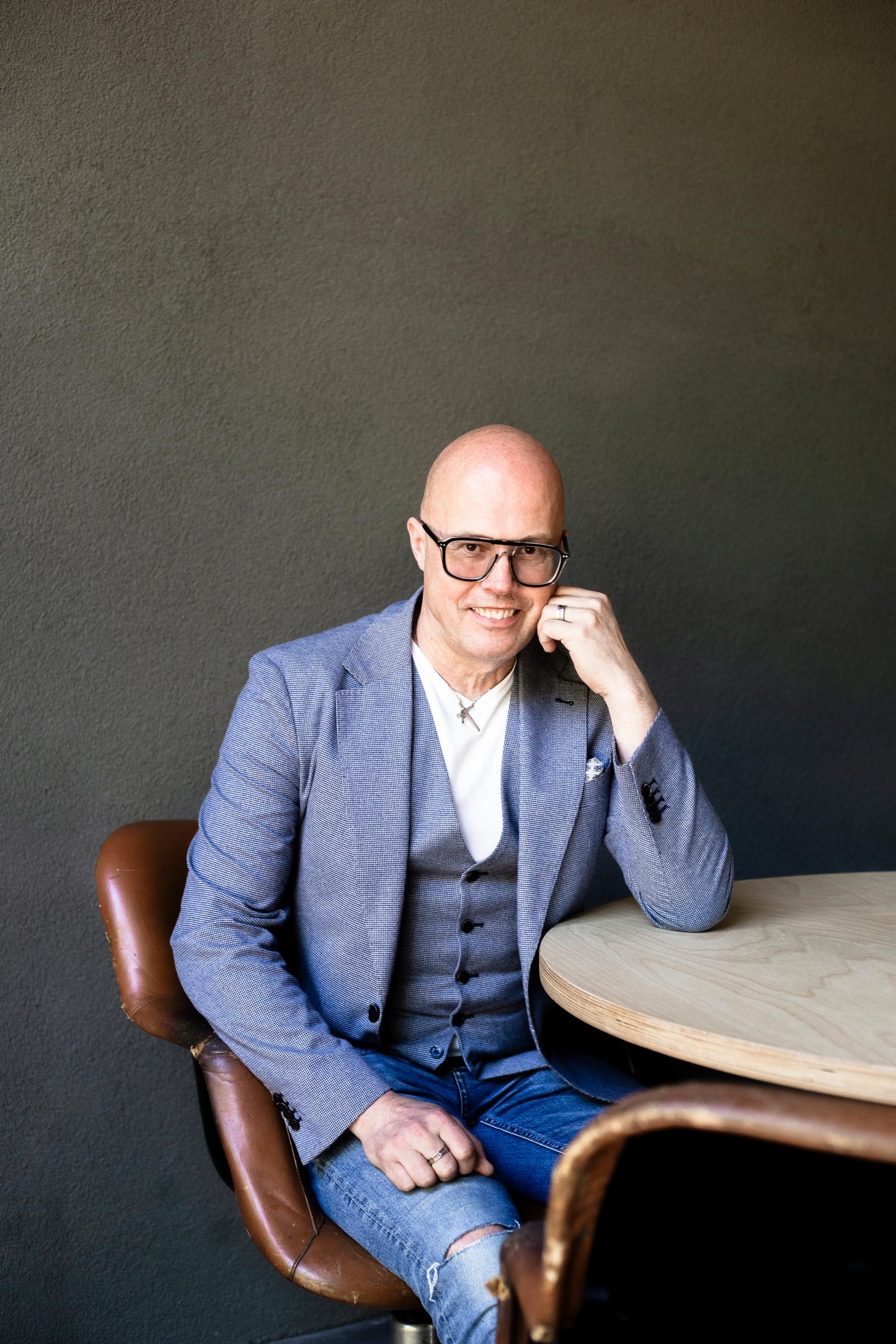
Extensive experience in renovation work has taught Kimmo that a simple frame structure is best. That was Hjemma’s goal. He gave the architect free rein over the layout and choice of materials.
“The house is one solid piece of brick. In simplicity, the details stand out. The house has a strong identity, and it really carries its materials,” says Pave Mikkonen.
The house frame is built from Wienerberger solid bricks. On the walls and roof, brick tile is used as the exterior cladding, which looks like wood from a distance. At the corners, it’s mitered—something Kimmo says was not easy to do.
The house has no unnecessary or redundant openings. For example, the incoming air vents are integrated near the window sills so they’re hidden. The house does have eaves, but the rainwater is directed off the roof via the brick covering, and the gutters run along the ground.
In front of the outbuilding, there will be a glassed-in area, and at the entrance to the main house, there will be a winter garden—the orangery—enclosed by sliding glass doors. It’s warm in there as early as March. Pave Mikkonen calls these modern porches.
In his view, Hjemma is also an example of a functional vacation home.
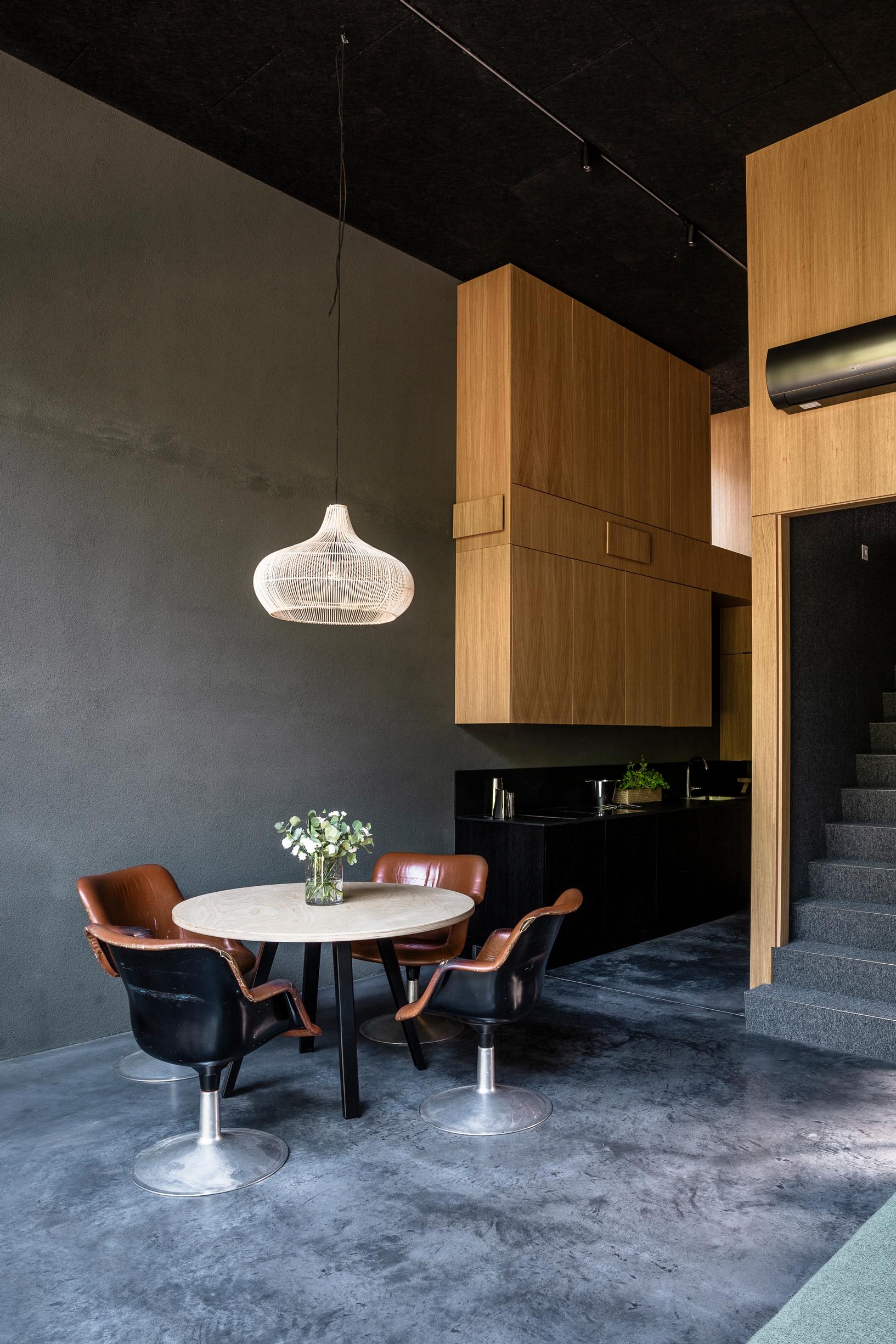
“We used oak for the built-in furniture. It’s affordable, durable, timeless, and ages beautifully.”Architect Pave Mikkonen
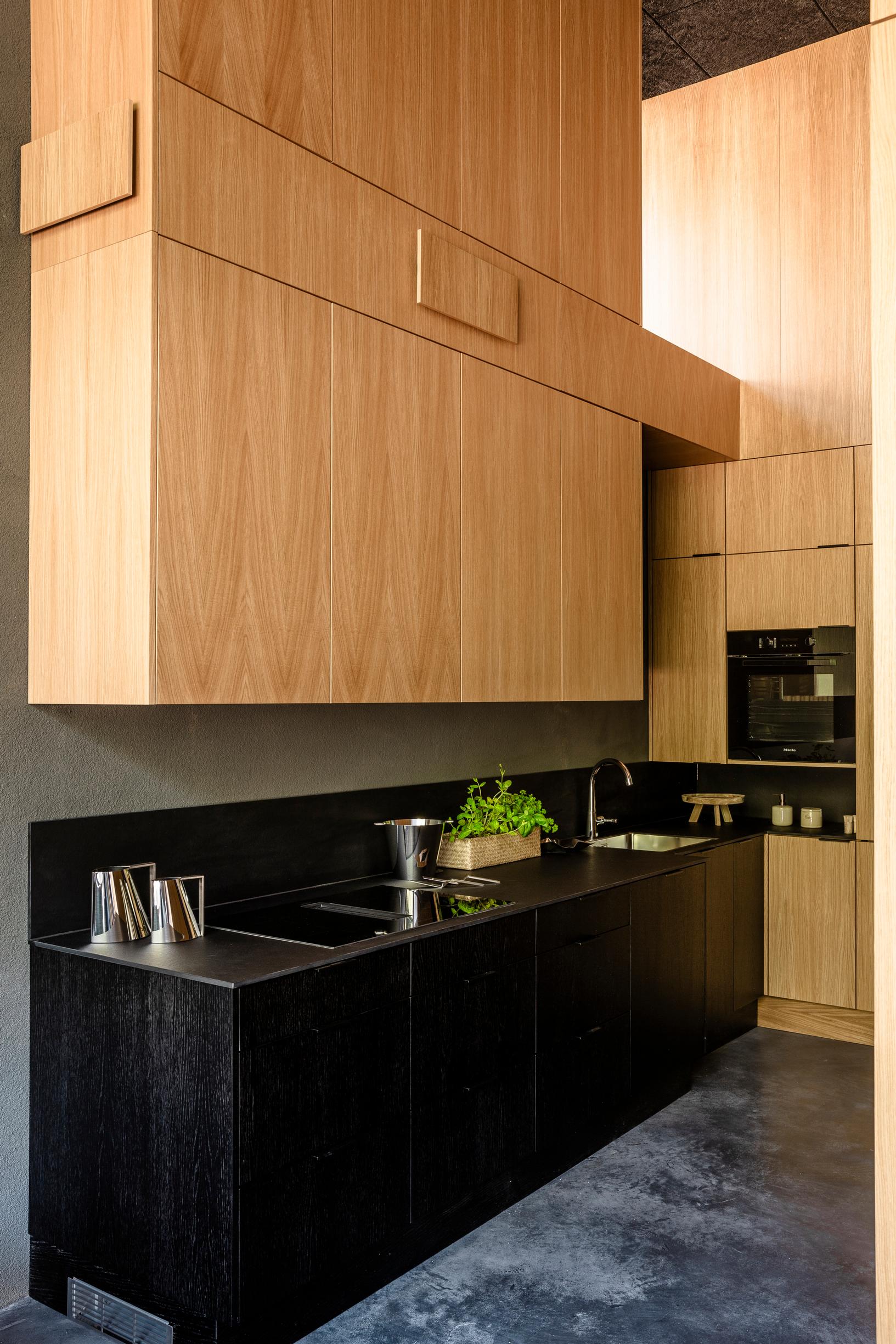
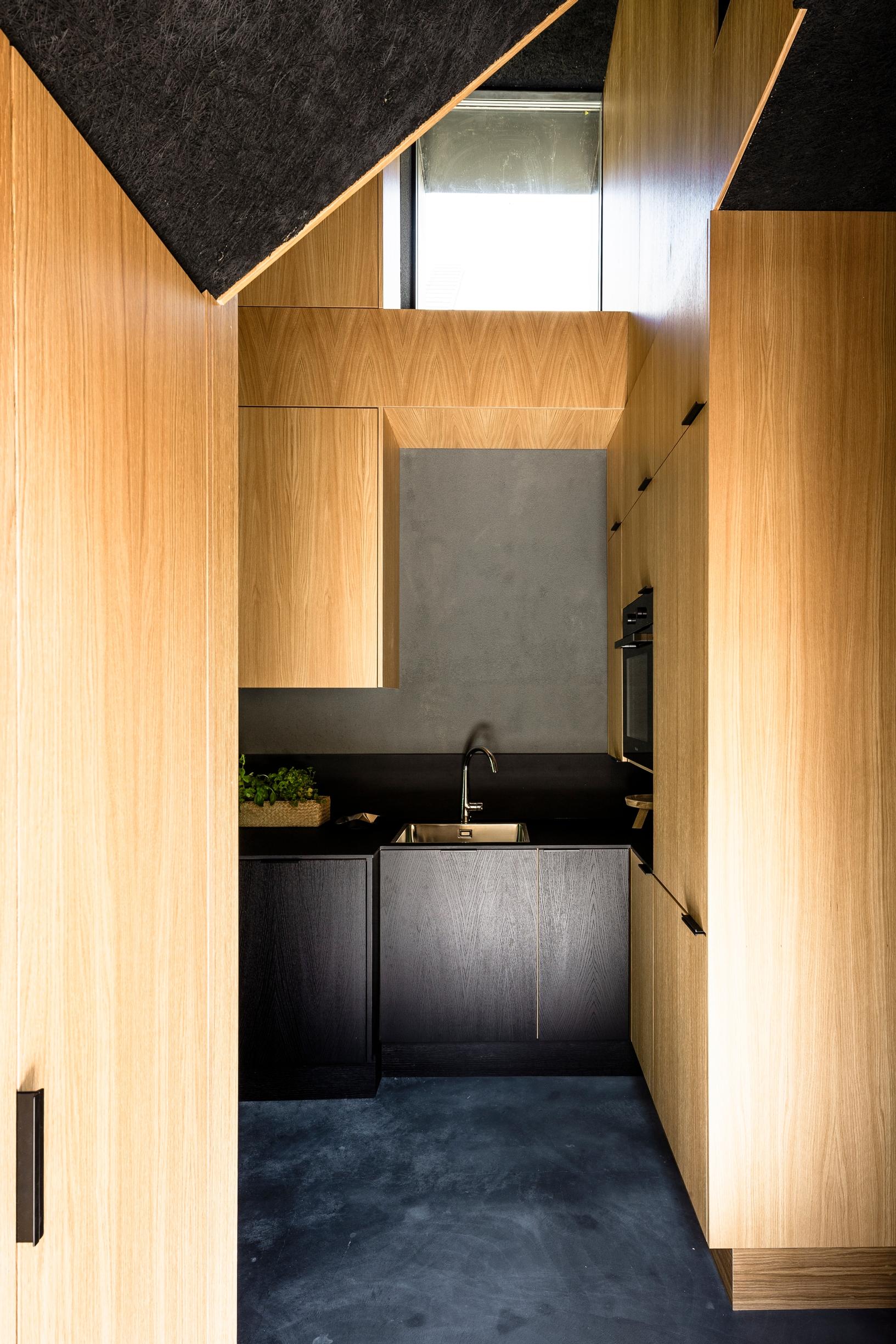
It is demanding to design a home that accommodates four people when the building permit only allows 60 + 20 square meters. The solution was to add a loft in the main house for a sleeping area, plus a bedroom in the outbuilding’s storage space. The main house has 53 square meters of living space, with an additional 15 on the loft.
You wouldn’t think so. Part of the feeling of spaciousness comes from the generous vertical volume, but design is the key.
“Every centimeter has been planned and every area utilized. There are no hallways in the house. They would immediately take up ten percent of the space,” the architect explains.
A lot of glass was used in the interior walls, partly because it saves space. For example, the bathroom adjacent to the bedroom is separated by an 8-millimeter-thick tempered and sandblasted glass wall. A standard wall would take up about 15 centimeters.
The kitchen is part of the architecture and overall scale, not just separate cabinets. All the built-ins are clad in oak veneer, and the stairs leading to the loft emerge from an oak wall.
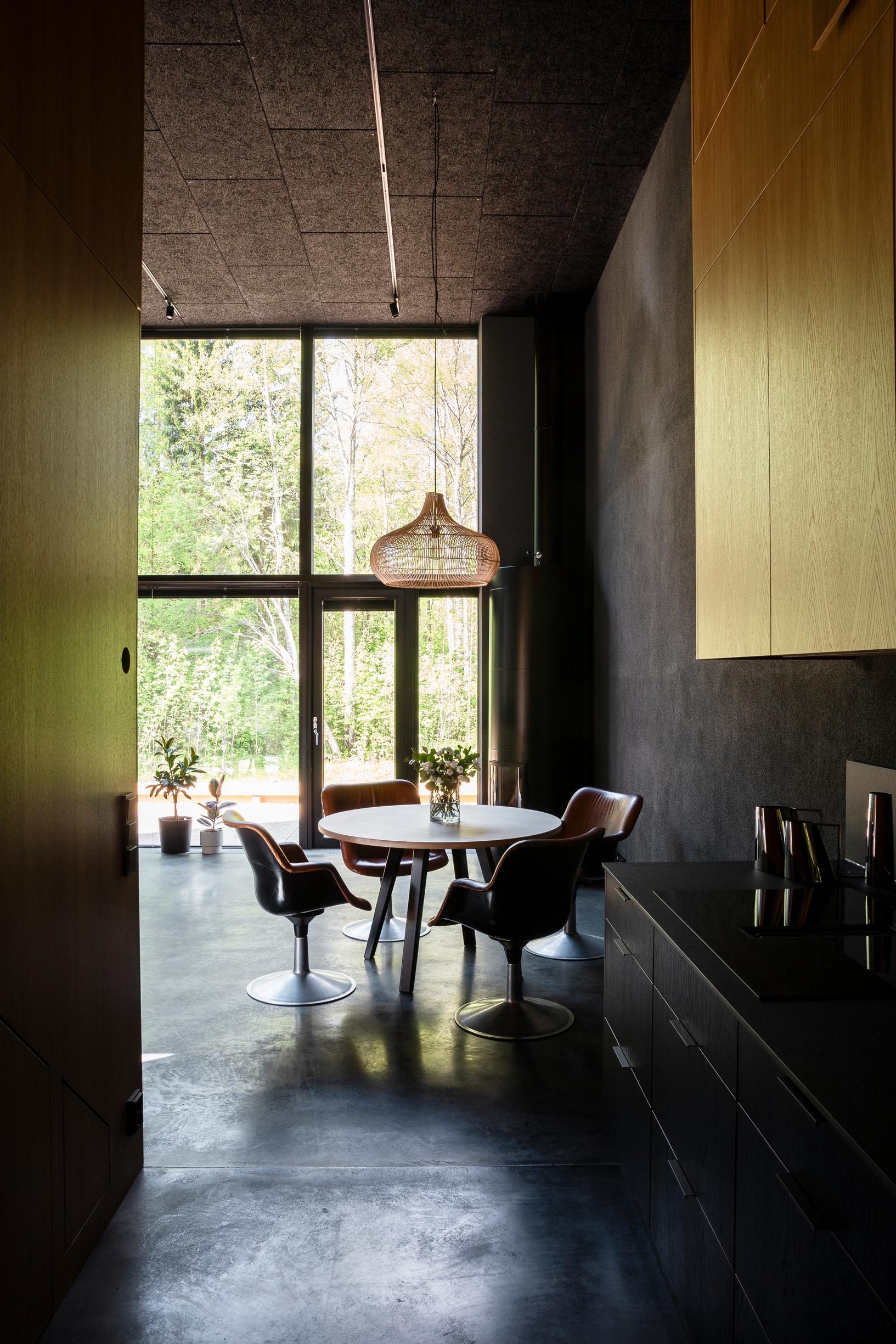
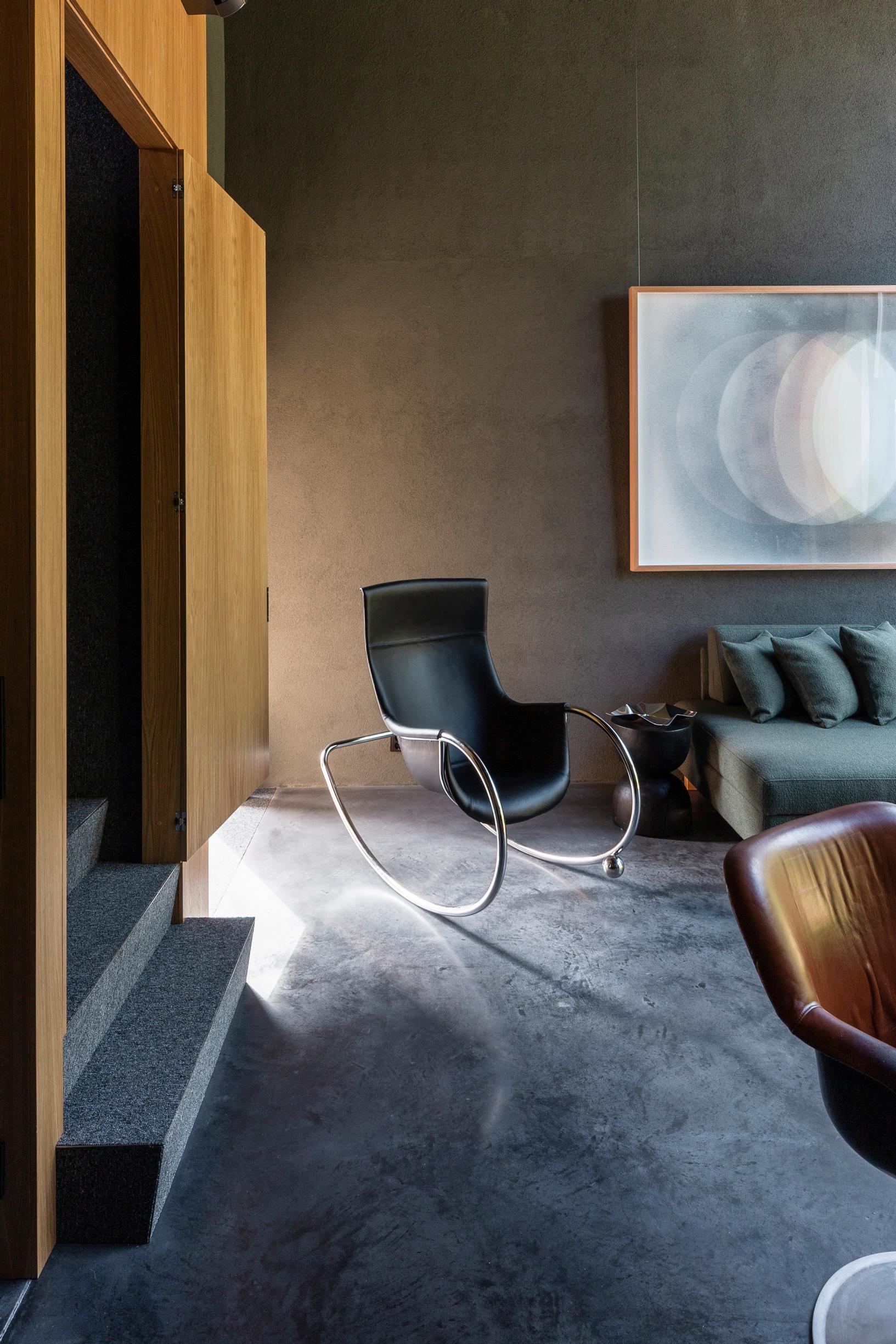
“When surfaces are dark, the amount of light can be controlled with lighting. If it were lighter, you’d get too much brightness in the summer.”Arkkitehti Pave Mikkonen
The home’s living room, kitchen and dining area form one tall space, with a glass wall facing the forest. Even so, there’s no echo in Hjemma. The secret to the soft acoustics is in the walls and ceiling. The walls are plastered brick, and the ceiling features cement-wood fiberboard.
“The carpenter called them ‘barn boards’ because in the 1950s and ’60s, similar boards were used in barns. They withstand moisture and insulate heat,” Kimmo explains.
The acoustics are also improved by the loft staircase and the other stair wall, which are both covered in wall-to-wall carpeting.
The overall look of the house is dark. Pave says that if the surfaces were light, there would be too much brightness in the summer.
“In a dark space, you can regulate light better throughout the different seasons than in a lighter space. Darkness is managed with good lighting, and it provides an excellent backdrop for art and furniture.”
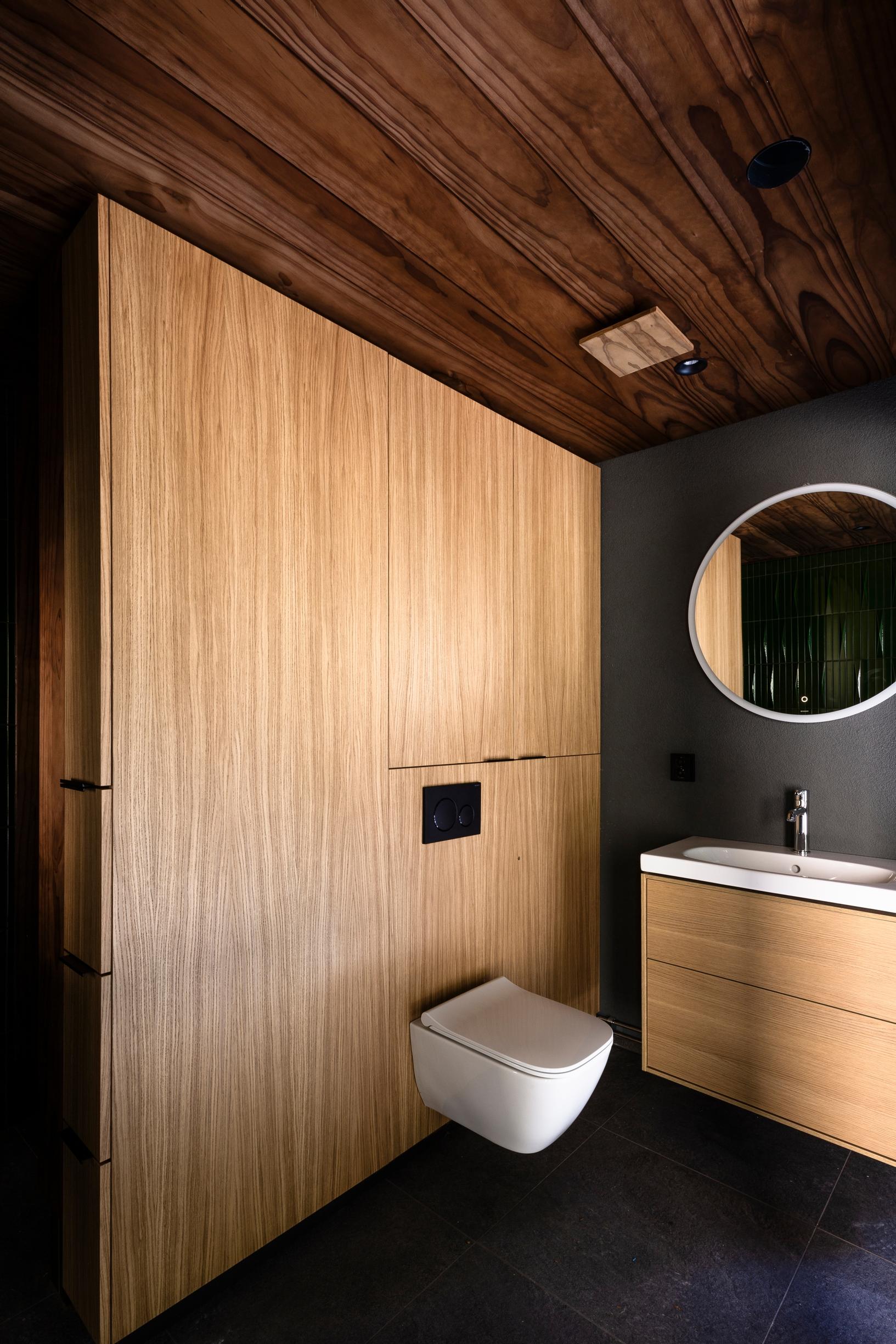
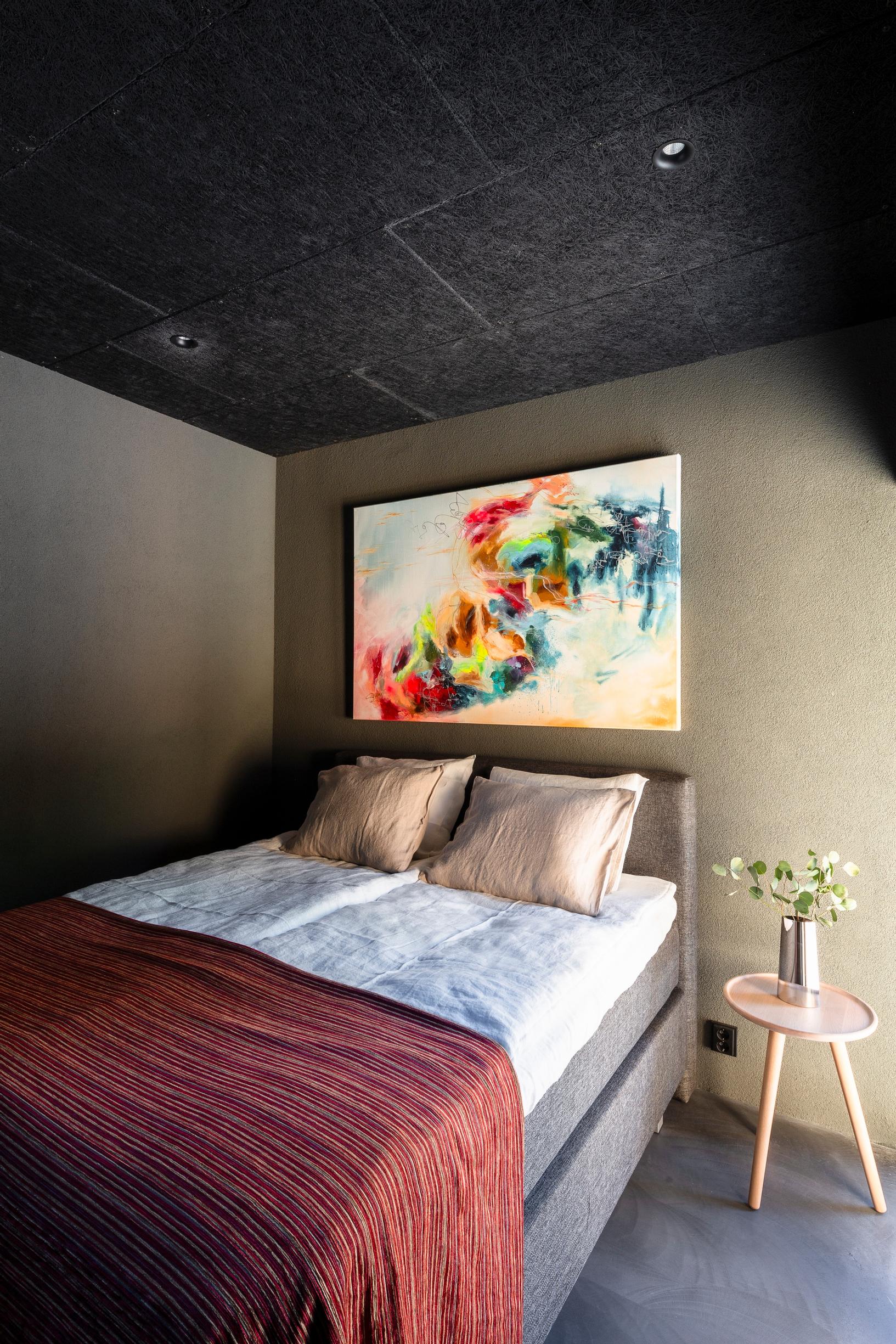
When an architect designs a small house, not only the building but also the lot must be carefully considered. The buildings need to harmonize with the site and landscape. Next to Hjemma is a protected grove with a fascinating history. During Oulu’s tar export era, it was a bustling sailship town. When ships arrived to collect cargo, they carried soil from their home port as ballast, which was then deposited here in Hietasaari. That’s why the grove has plants that normally shouldn’t grow in this latitude. You can see the grove right as you approach Hjemma.
“I feel like I’ve come home as soon as I step into the yard between these two buildings,” Kimmo says.
He’s moving to Hjemma from a 270-square-meter house and estimates that only a tenth of his belongings will fit, and as for furniture, only Yrjö Kukkapuro’s Junior chairs.
“I still don’t know exactly how big of a life change this will be. It feels liberating to get rid of so much stuff. My life as a hoarder has to end now.”
The green tiles in the backyard sauna’s washroom were inspired by the adjacent grove, which in summer resembles a vibrant green caipiroska cocktail.
